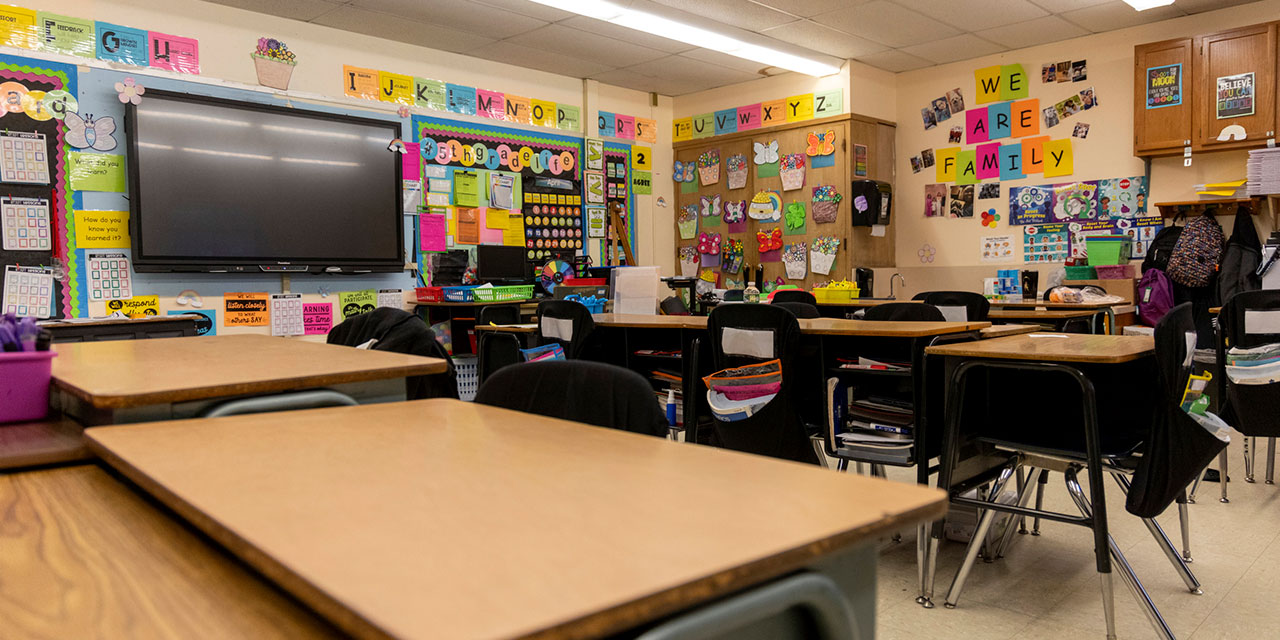
The school-choice movement scored a major win last week, when Texas governor Greg Abbott signed into law a $1 billion universal school-choice bill. Now, every Republican-controlled state has enacted school choice, and choice programs in one form or another operate in 35 states, Washington, D.C., and Puerto Rico, benefitting more than 1.25 million students.
But there’s more work to be done. The next target for the school-choice movement should be New York, home to the nation’s most inefficient public school system.
Finally, a reason to check your email.
Sign up for our free newsletter today.
New York schools are first in the nation in funding but produce only mediocre learning outcomes. According to the Citizens Budget Commission, New York spends $36,293 per pupil, representing a 21 percent increase over the 2020–21 school year and 91 percent more than the national average. Yet New York fourth-graders tied for 39th in math and 25th in reading on the 2024 National Assessment of Educational Progress (NAEP) exams, while eighth-graders ranked 27th in both categories.
Families in New York are increasingly seeking educational options beyond public schools. According to an Empire Center analysis, enrollment in New York charter schools has more than doubled since 2013, rising to over 180,000 students. New York has the second-highest growth rate of homeschooled students in the country, increasing from fewer than 20,000 in 2013 to nearly 54,000 last year—even as the state remains one of the least friendly for homeschoolers. Meantime, public schools have experienced a decline of over 12 percent in their enrollment over the same period.
Given the ground it has already gained in red states, the school-choice movement must now turn to states led by Democrats and often influenced by strong teachers’ unions. New York stands out as a prime target for this second wave. It has the fourth-largest population of K-12 public-school students. A school-choice program here would significantly boost the number of American students with access to educational freedom. It could also serve as a model for other blue states.
A slogan like “So Much Money, So Little Learning” might help New Yorkers consider the need for school choice. It would tell New Yorkers that, over the past five years, per-pupil funding has grown dramatically while enrollment and learning outcomes have declined. It would also note that our state-level elected officials have dismantled most public school accountability measures and passed a class-size law for New York City that primarily preserves teachers’ union revenues.
The project to bring school choice to New York may not be as much of a stretch politically as it seems. New York saw a significant political shift rightward in the last election, moving 12 percentage points between 2020 and 2024. New Yorkers will change their voting habits if they’re dissatisfied. An organized effort to hold elected officials accountable for the inefficiencies in the education system could help install moderate candidates from both parties who support school choice and are committed to improving student outcomes.
New York City, especially, has abundant resources to help families create exceptional learning experiences for their children. If families in the state enjoy more freedom to allocate their children’s education funds, they could leverage the city’s vast educational assets, including world-class museums, universities, and arts, among other advantages.
Wealthy families already take advantage of these amenities, supplementing their children’s education with extra tutoring, classes, internships, and field trips. Educational freedom in New York would enable all families to access the wealth of opportunities the state has to offer.
Photo by Howard Schnapp/Newsday RM via Getty Images
City Journal is a publication of the Manhattan Institute for Policy Research (MI), a leading free-market think tank. Are you interested in supporting the magazine? As a 501(c)(3) nonprofit, donations in support of MI and City Journal are fully tax-deductible as provided by law (EIN #13-2912529).
Source link
















